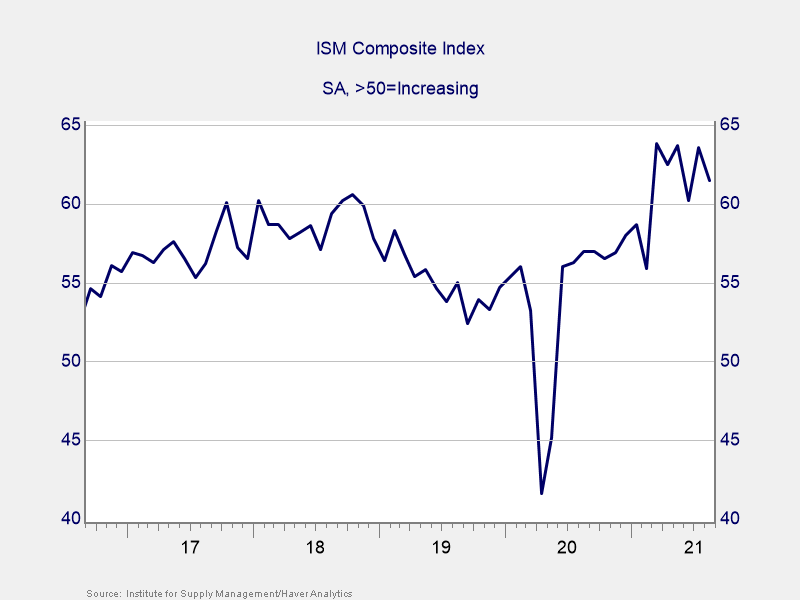Rocky September Leads to Mixed Quarter for Markets
Markets pulled back sharply in September after setting record highs in August. The S&P 500 declined 4.65 percent in September but gained 0.58 percent for the quarter; the Dow Jones Industrial Average fell 4.20 percent for the month and 1.46 percent for the quarter; and the Nasdaq Composite declined 5.27 percent in September and 0.23 percent for the quarter.
These weak results came despite improving fundamentals. According to Bloomberg Intelligence, as of October 1, the average earnings growth rate for the S&P 500 in the second quarter was 96 percent. This is higher than analyst estimates of a 65.8 percent growth rate. Future earnings growth is also expected to be healthy, which should support markets.
Technical factors throughout the month and quarter were also supportive. All three major indices remained above their respective 200-day moving averages throughout the entire period. This marks 15 straight months with continued technical support for the three major U.S. markets.
International markets had a similar September. The MSCI EAFE Index of developed markets dropped 2.90 percent for the month, leaving it down 0.45 percent for the quarter. The MSCI Emerging Markets Index dropped 3.94 percent in September and 7.97 percent for the quarter.
Fixed income also had a challenging month and quarter, driven by rising long-term interest rates in September. The 10-year U.S. Treasury yield increased from 1.31 percent to 1.52 percent at the month’s end. This led to a 0.87 percent decline in the Bloomberg U.S. Aggregate Bond Index for the month, though it managed a 0.05 percent quarterly gain.
High-yield fixed income, as measured by the Bloomberg U.S. Corporate High Yield Index, lost 0.01 percent during the month but gained 0.89 percent for the quarter. High-yield is typically less affected by changing interest rates.
Medical Risks Decline in September
We ended September with a solid decline in the number of daily new COVID-19 cases throughout the country, and we saw similar improvements in terms of hospitalizations and deaths. This improvement can be attributed to increased vaccination, with 55 percent of the population fully vaccinated and another 8.8 percent having received at least one shot.
Economic Recovery Slows
Medical concerns during the quarter were accompanied by increased economic risks. Job growth slowed sharply in August, and layoffs ticked back up during September, signaling continued potential weakness in the labor market. Meanwhile, the expiration of federal support programs hit consumer confidence, which dropped during the quarter.
Spending held up well in August, despite declining confidence. Retail sales increased by 0.7 percent and personal spending growth was up 0.8 percent. These results were well above economist estimates and showed consumers continue to spend and empower the economic recovery.
Business confidence and spending also showed signs of continued growth throughout the period. The Institute for Supply Management (ISM) Composite index, a measure of manufacturer and service sector confidence, finished August at 61.5. As you can see in Figure 1, business confidence remains well above recent lows.
Figure 1. ISM Composite Index, 2016–Present

High levels of business confidence supported additional business spending and investment during the month and quarter. Businesses have been scrambling to meet high levels of pent-up consumer demand with increased investment and hiring. This should be a tailwind for growth through the end of the year.
Housing continued to be an area of strength, and sales remained well above pre-pandemic levels, supported by near-record-low mortgage rates and shifting consumer demand for more space due to the pandemic.
Risks Shifting as We Head into the Fall
Political risks are very real as we enter the fourth quarter. While the last-minute deal at the end of September to avoid a partial government shutdown helped mitigate some of the political risk, the ongoing negotiations between the White House and both parties in Congress over the debt ceiling and two large spending bills continues to rattle investors and markets.
Internationally, risks are rising as well, as seen by the slowdown in China and the concern over the country’s property development sector. While these troubles aren’t expected to cause a global financial crisis, the uncertainty from the situation is one more thing for investors to worry about.
Ultimately, the most likely path forward for the economy and markets is continued growth, as the economy still has considerable momentum. A well-diversified portfolio that matches investor goals and timelines remains the best path forward for most. As always, reach out to us if you have any concerns.
All information according to Bloomberg, unless stated otherwise.
Disclosure: Certain sections of this commentary contain forward-looking statements based on our reasonable expectations, estimates, projections, and assumptions. Forward-looking statements are not guarantees of future performance and involve certain risks and uncertainties, which are difficult to predict. Past performance is not indicative of future results. Diversification does not assure a profit or protect against loss in declining markets. All indices are unmanaged and investors cannot invest directly into an index. The Dow Jones Industrial Average is a price-weighted average of 30 actively traded blue-chip stocks. The S&P 500 Index is a broad-based measurement of changes in stock market conditions based on the average performance of 500 widely held common stocks. The Nasdaq Composite Index measures the performance of all issues listed in the Nasdaq Stock Market, except for rights, warrants, units, and convertible debentures. The MSCI EAFE Index is a float-adjusted market capitalization index designed to measure developed market equity performance, excluding the U.S. and Canada. The MSCI Emerging Markets Index is a market capitalization-weighted index composed of companies representative of the market structure of 26 emerging market countries in Europe, Latin America, and the Pacific Basin. It excludes closed markets and those shares in otherwise free markets that are not purchasable by foreigners. The Bloomberg Aggregate Bond Index is an unmanaged market value-weighted index representing securities that are SEC-registered, taxable, and dollar-denominated. It covers the U.S. investment-grade fixed-rate bond market, with index components for a combination of the Bloomberg government and corporate securities, mortgage-backed pass-through securities, and asset-backed securities. The Bloomberg U.S. Corporate High Yield Index covers the USD-denominated, non-investment-grade, fixed-rate, taxable corporate bond market. Securities are classified as high-yield if the middle rating of Moody’s, Fitch, and S&P is Ba1/BB+/BB+ or below. Authored by Brad McMillan, CFA®, CAIA, MAI, managing principal, chief investment officer, and Sam Millette, manager, fixed income, at Commonwealth Financial Network®. © 2020 Commonwealth Financial Network®





